World 🢖 Europe 🢖 United Kingdom 🢖 Guernsey
Prehistoric and ancient cemeteries 🢔 Cemeteries 🢔 Archaeological wonders 🢔 Categories of wonders
Wonder
Le Dehus passage grave
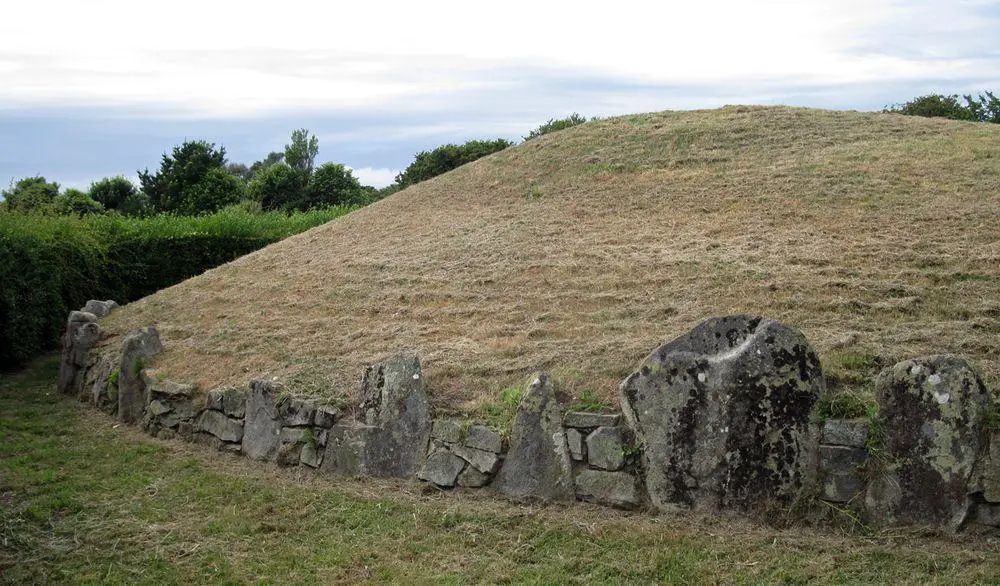
 In short
In short
Contrary to many other exciting archaeological monuments, Le Déhus is located in a rather unromantic setting – in a sharp bend of street opposite the market garden in the densely populated island of Guernsey. This monument has been extensively excavated and a lot here has been rebuilt and reconstructed. Nevertheless, this is a magnificent and enigmatic monument of history.
 42.8%
42.8%
GPS coordinates
Location, address
Alternate names
Age
Map of the site
If you see this after your page is loaded completely, leafletJS files are missing.
 In detail
In detail
Much explored, much altered
Current name of this passage grave – "Déhus" – most likely comes from the Old Norse dys – a mound, barrow. Thus the origin of this mound was not a secret in medieval times.
In the early 19th century and earlier Le Déhus was not covered with soil – it was a bare heap of stones. These stones in the 18th century became an object of desire to local quarrymen. Just in time, some John de Havilland saved the mound in 1775 – he purchased the stones to keep them intact.
First known excavations here took place already in 1837 – 1847 – these works were organized by F.C.Lukis and his family. They found that this aggregation of stones really hides a prehistoric passage grave. Unfortunately, the results of these excavations have not been officially published.
There have been more excavations in Le Déhus – by Rev. G.E.Lee in 1898, by Col. T.W.M. de Guerin in 1915.
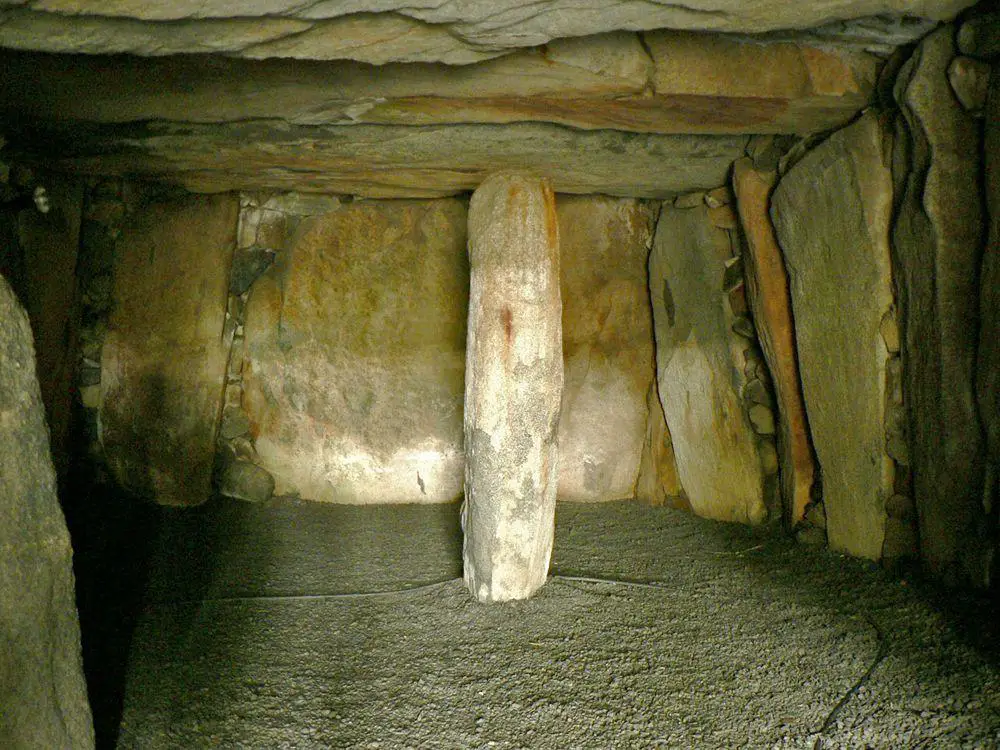
In 1932 there were organized excavations by Miss V.C.C. Collum – it was after these works when this ancient stone setting was covered with a mound.
In fact, the numerous explorers of this passage grave were keen to restore also the chambers of passage – but, unfortunately, each of them did it with some alterations and now we don’t know how the original passage grave looked. Thus nowadays Le Déhus is not as authentic as, for example, such wonderful monument as La Hougue Bie in the nearby Jersey Island.
Burial mound with mysterious standing stone
Diameter of the mound now is 20 m. The mound is made in the 20th century – but the surrounding stones at least partly have been preserved from the original, Neolithic mound. It is known that sometime around 1844 there were at least 19 of these stones intact.
Interesting feature is lots of limpet shells inside the grave. There is a hypothesis that this monument has been built in a shell midden.
The entrance in the grave is oriented towards the north-east – towards the sea.
Narrow passage, almost 3 m long and just 1 m wide, leads into the mound – after squeezing through it one finds himself in a spacious chamber. This chamber is 6 m long and up to 3.5 m wide. Walls are made of large, closely fitting upright stones. It is possible that originally it was roofed with four giant capstones. Three original capstones remain.
Chamber has four side chambers. Two of these chambers are modern reconstructions and do not reflect the original structure.
Unique feature of Le Déhus is a standing stone in the middle of the chamber – it almost reaches a capstone. It is not completely clear, what is the original purpose of this stone – maybe it was an attempt to prevent the capstone from fracturing (capstone in fact fractured and was repaired in the 19th century). But it is possible that this upright stone holds some symbolic meaning.
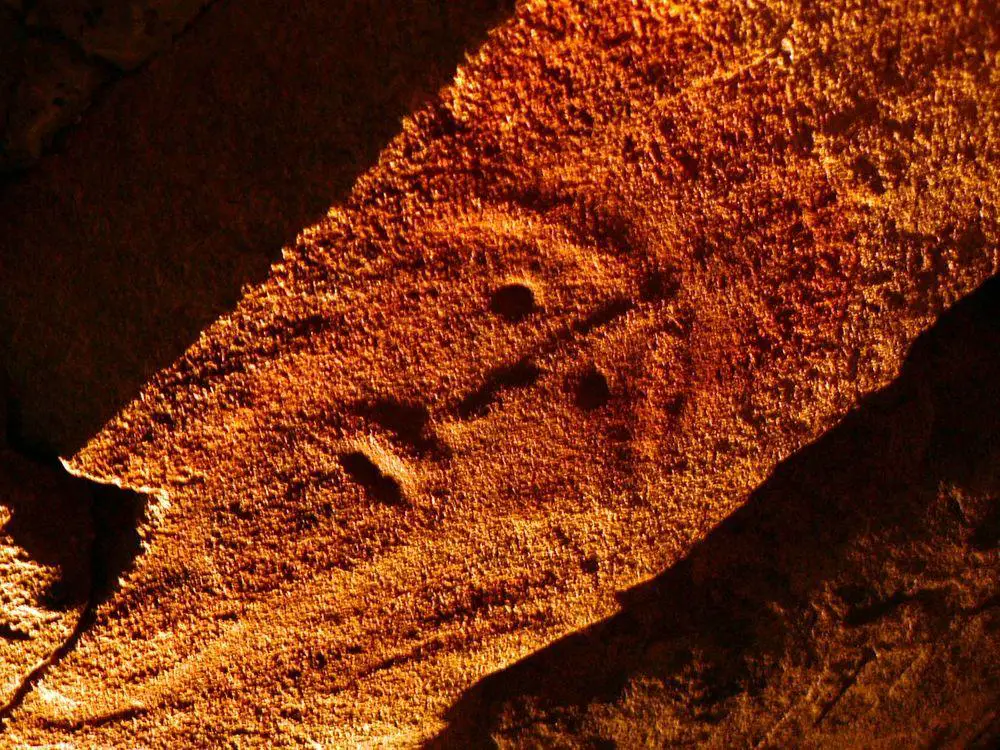
Neolithic burials
Archaeological findings show that Le Déhus certainly was used for burials.
Lukis found on the floor lots of human ashes and bones, skeletons, stone and bone tools, shards of pottery. There were recovered also 7 or 8 pottery vessels – all located near a mysterious upright pillar in the main chamber of the passage grave.
In one chamber there were found multiple layers of human burials – this hints at the fact that this monument was used for an extended period of time.
Buried alive?
Especially puzzling is one finding: in a very narrow right-hand chamber, F.C.Lukis found two male skeletons. These people died standing upright on their knees – their bones were fixed in this position by the accrued ground and limpet shells. It looks like these people were buried here alive.
Le Gardien du Tombeau
It is amazing that the most amazing value of Le Déhus was not noticed by F.C.Lukis, although he worked in the site for ten years. This unique feature – prehistoric stone carving – was hidden – the second capstone of passage grave was broken and lying on the ground. Later – in 1898 – capstone was repaired with wire but: again the image was not noticed.
Only in 1917 there was discovered an image of a bearded man holding a bow and arrows on the surface of capstone. This artwork was named Le Gardien du Tombeau – the guardian of the tomb.
Carving was done before the stone was broken – the lines are seen on both parts of the stone.
Parts of the carving of Le Gardien are hidden beneath the support stone – thus almost certainly this is an older monument, brought here. It is possible that this was a standing stone – an earlier megalithic monument.
References
- Le Dehus, www.megalithics.com. Accessed in the 3rd April 2011
- Full image of Le Gardien, www.megalithic.co.uk. Accessed in the 3rd April 2011
 Linked articles
Linked articles
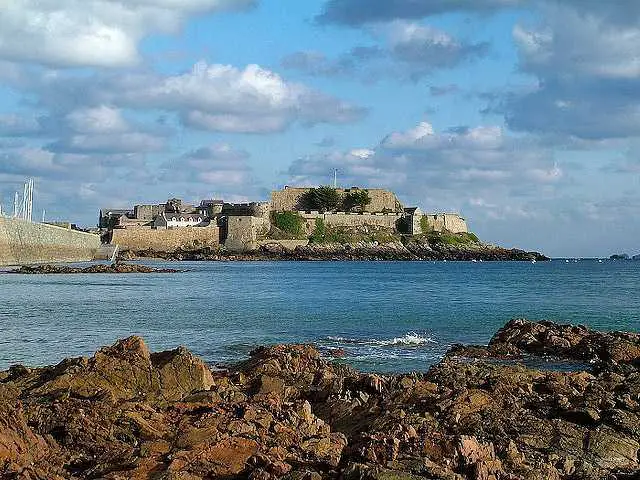
Wonders of Guernsey
The Bailiwick of Guernsey includes not just Guernsey but also Alderney, Sark, and several more islands that are forming the British Crown Dependency.
These small islands offer breathtaking scenery, interesting local history, and traditions. Highlights include a rich archaeological heritage, Castle Cornet, amazing scenery of Sark island and other islands.
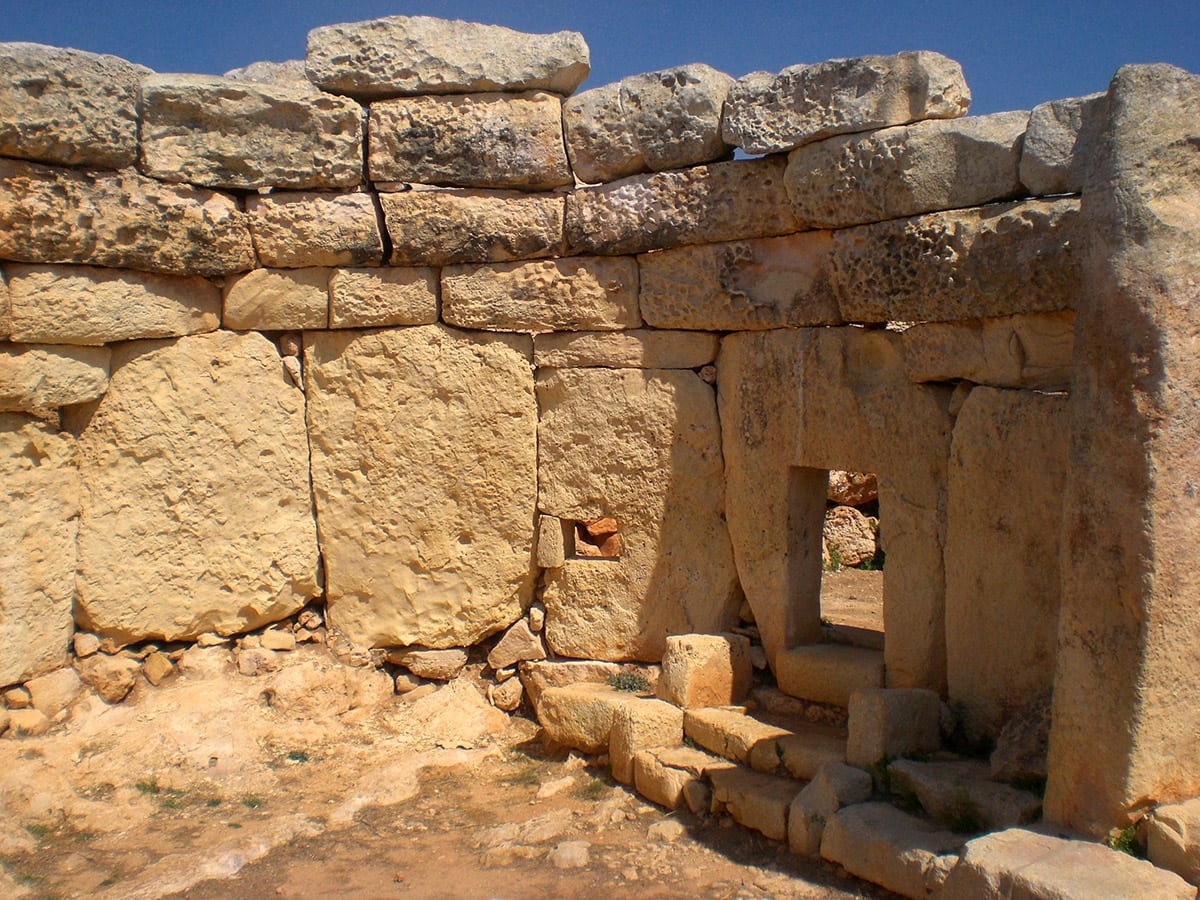
Megaliths
One of the most fascinating groups of archaeological monuments are prehistoric structures made of stones – megaliths. Through the ages, people have loved to strain their minds to find a sensible explanation for the many riddles posed by megaliths.
Even today, we can admit with some pleasure, there are thousands of mysteries left for us.

Wonders of Europe
The heritage of Europe is diverse and endlessly interesting. Incomparably rich is the wealth of European historical architecture, but this part of the world has exciting natural heritage and archaeological heritage as well.
 Recommended books
Recommended books
500 Years of Island Life
From the early 1400s to the 21st century, the island of Guernsey was a microcosm of society edging its way from feudalism towards democracy. During those 500 years, the Lihou family worked and lived on the island and their story is woven into many of the great events that have shaped, not just the island, but the wider world. Sixteen generations of the Lihou family span the half-millennium of this story and with each generation, a unique view of the society and context of their everyday lives unfolds.


